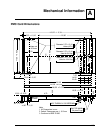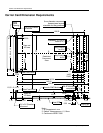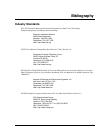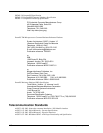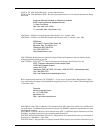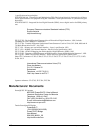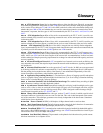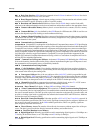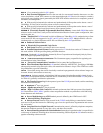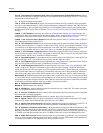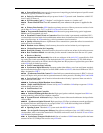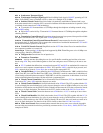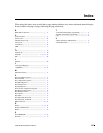
Glossary
122 Interphase Corporation
BRI Basic Rate Interface ISDN interface composed of two B Channels and one D Channel for circuit-
switched communication of voice, video, and data.
BSP Board Support Package A board support package consists of documentation and software used to
configure and install a specific operating system on a specific product.
BUS Broadcast and Unknown Server Multicast server used in ELANs that is used to flood traffic
addressed to an unknown destination and to forward multicast and broadcast traffic to the appropriate clients.
CAM Content Addressable Memory Memory that is accessed based on its contents, not on its memory
address.
CBR Constant Bit Rate QoS class defined by the ATM Forum for ATM networks. CBR is used for con-
nections that depend on precise clocking to ensure undistorted delivery.
CCS Common Channel Signaling Signaling system used in telephone networks that separates signaling
information from user data. A specified channel is exclusively designated to carry signaling information for
all other channels in the system.
COM Communication or Communications
CompactPCI CompactPCI is an adaptation of the Peripheral Component Interconnect (PCI) Specification
for industrial and/or embedded applications requiring a more robust mechanical form factor than desktop PCI.
CompactPCI uses industry standard mechanical components and high performance connector technologies
to provide an optimized system intended for rugged applications. CompactPCI provides a system that is elec-
trically compatible with the PCI Specification, allowing low cost PCI components to be utilized in a mechan-
ical form factor suited for rugged environments. CompactPCI is an open specification supported by the
PICMG (PCI Industrial Computer Manufacturers Group), which is a consortium of companies involved in
utilizing PCI for embedded applications.
CPCS Common Part Convergence Sublayer An abstract ATM protocol API defined by the ATM Forum.
It forms the boundary interface between the purely software implemented higher layer ATM protocols and
the segmentation and reassembly process controlled by hardware.
CPM Communication Processing Module
CRC4 Cyclic Redundancy Check. Error-checking technique in which the frame recipient calculates a
remainder by dividing frame contents by a prime binary divisor and compares the calculated remainder to a
value stored in the frame by the sending node.
CS Convergence Sublayer One of the two sublayers of the AAL CPCS, which is responsible for pad-
ding and error checking. PDUs passed from the SSCS are appended with an 8-byte trailer (for error checking
and other control information) and padded, if necessary, so that the length of the resulting PDU is divisible
by 48. These PDUs are then passed to the SAR sublayer of the CPCS for further processing.
CSU Channel Service Unit A component that terminates a digital circuit, such as T1. A CSU assures
compliance to FCC regulations and preforms some line-conditioning functions.
D Channel Data Channel Full-duplex, 16-kbps (BRI) or 64-kbps (PRI) ISDN channel.
DCE 1. Data Communications Equipment (EIA expansion). 2. Data Circuit-terminating Equipment
(ITU-T expansion). Devices and connections of a communications network that comprise the network end of
the user-to-network interface. The DCE provides a physical connection to the network, forwards traffic, and
provides a clocking signal used to synchronize data transmission between DCE and DTE devices. Modems
and interface cards are examples of DCE.
DLCI Data-Link Connection Identifier Value that specifies a PVC or SVC in a Frame Relay network. In
the basic Frame Relay specification, DLCIs are locally significant (connected devices might use different val-
ues to specify the same connection). In the LMI extended specification, DLCIs are globally significant
(DLCIs specify individual end devices).
DMA Direct Memory Access The transfer of data directly into memory without supervision of the pro-
cessor. The data is passed on the bus directly between the memory and another device.
DPRAM Dual Port Random Access Memory
DS1 Digital Signal level 1 Framing specification used in transmitting digital signals at 1.544-Mbps on a
T1 facility (in the United States) or at 2.108-Mbps on an E1 facility (in Europe).
DS3 Digital Signal level 3 Framing specification used for transmitting digital signals at 44.736 Mbps on
a T3 facility.




